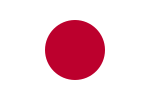
Back Anime Afrikaans Anime ALS አኒሜ Amharic Anime AN أنمي Arabic أنيمي ARY এনিমে Assamese Anime AST Anime Azerbaijani Аниме Bashkir
| Anime | |
|---|---|
Trailer for the 2022 anime Heroines Run the Show | |
| Publishers | List of anime companies |
| Series | Lists of anime |
| Languages | Japanese |
| Related articles | |
| Part of a series on |
| Anime and manga |
|---|
 |
|
|
| Part of a series on the |
| Culture of Japan |
|---|
 |
Anime (Japanese: アニメ, IPA: [aꜜɲime] ⓘ[a]; derived from a shortening of English animation) is hand-drawn and computer-generated animation originating from Japan. Outside Japan and in English, anime refers specifically to animation produced in Japan.[1] However, in Japan and in Japanese, anime describes all animated works, regardless of style or origin. Many works of animation with a similar style to Japanese animation are also produced outside Japan. Video games sometimes also feature themes and art styles that are sometimes labelled as anime.
The earliest commercial Japanese animation dates to 1917. A characteristic art style emerged in the 1960s with the works of cartoonist Osamu Tezuka and spread in the following decades, developing a large domestic audience. Anime is distributed theatrically, through television broadcasts, directly to home media, and over the Internet. In addition to original works, anime are often adaptations of Japanese comics (manga), light novels, or video games. It is classified into numerous genres targeting various broad and niche audiences.[2]
Anime is a diverse medium with distinctive production methods that have adapted in response to emergent technologies. It combines graphic art, characterization, cinematography, and other forms of imaginative and individualistic techniques.[3] Compared to Western animation, anime production generally focuses less on movement, and more on the detail of settings and use of "camera effects", such as panning, zooming, and angle shots.[3] Diverse art styles are used, and character proportions and features can be quite varied, with a common characteristic feature being large and emotive eyes.[4]
The anime industry consists of over 430 production companies, including major studios such as Studio Ghibli, Kyoto Animation, Sunrise, Bones, Ufotable, MAPPA, Wit Studio, CoMix Wave Films, Madhouse, Inc., TMS Entertainment, Pierrot, Production I.G, Nippon Animation and Toei Animation. Since the 1980s, the medium has also seen widespread international success with the rise of foreign dubbed, subtitled programming, and since the 2010s due to the rise of streaming services and a widening demographic embrace of anime culture, both within Japan and worldwide.[5][6] As of 2016,[update] Japanese animation accounted for 60% of the world's animated television shows.[7]
Cite error: There are <ref group=lower-alpha> tags or {{efn}} templates on this page, but the references will not show without a {{reflist|group=lower-alpha}} template or {{notelist}} template (see the help page).
- ^ Ashcraft, Brian (May 18, 2021). "What "Anime" Means". Kotaku. Archived from the original on March 2, 2022. Retrieved March 2, 2022.
- ^ Ministry of Economy, Trade and Industry (2020). "Manga and Anime". Google Arts and Culture. Archived from the original on October 27, 2023. Retrieved October 27, 2023.
- ^ a b Craig 2000, pp. 139–140.
- ^ Ashcraft, Brian (September 21, 2016). "A Serious Look at Big Anime Eyes". Kotaku. Archived from the original on February 4, 2021. Retrieved January 4, 2020.
- ^ Brzeski, Patrick (May 16, 2022). "How Japanese Anime Became the World's Most Bankable Genre". The Hollywood Reporter. Archived from the original on December 6, 2022.
- ^ "Decades of Growth, Rise of VOD and Streaming Trigger Anime Avalanche". vfxvoice. October 3, 2022.
- ^ Napier, Susan J. (2016). Anime from Akira to Howl's Moving Castle: Experiencing Contemporary Japanese Animation. St. Martin's Press. p. 10. ISBN 9781250117724. Archived from the original on September 24, 2023. Retrieved February 14, 2019.